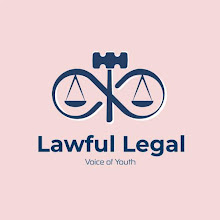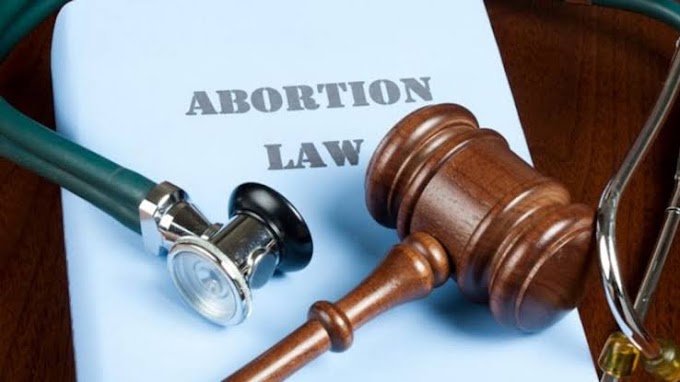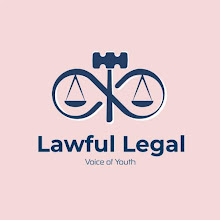Racism In India
Written By:-Anjulika Arya , a 2nd Year LLB Student of Dr. Rizvi College of Law, Karari, Kaushambi, Uttar Pradesh Affiliated to Prof. Rajendra Singh (Rajju Bhaiya) University, Prayagraj
=========================================================
Introduction to Racism
Race can be defined as the attributes, traits and features which differentiates one group from the other existing social groups. In simple words, races are the physical qualities that one inherits biologically and serves as a way of self-identification from the other groups. Racism is a theory that one race is superior that the other based on the physical attributes, caste, creed, ethnicity or origin.
A person is being racist when he displays the emotions of hatred, prejudice, biasness and intolerance against another person solely due to his skin color, structure of his lips, language, place of origin or any other attribute which he might have gained biologically.
We live in a country where racism is deeply rooted, especially in the North-east parts. The north-eastern people are subjected to daily humiliation and passing of comments such as by calling them “Chinese”. With the ongoing spread of the COVID-19, there has been an increase in the hate crime against the Northeast Asian people due to their facial features. The constant insult, “Chinki” has been invariably used by the Indians to identify any East Asian person which clearly depicts racism.
Ancient India and Racism
We live in a society where the people are highly obsessed with one’s skin tone. Indians have varied degrees of skin complexion and they are categorized as fair, dusky, dark etc. Indians believe that fair-skinned people are of a much more worth and value than those who are dark skinned. The fair is considered the intellectual and gets the respect, dignity and the social status while the dark are left behind struggling for their rights and status. We face color hatred and prejudice and somehow still choose to remain silent about it
The Constitution of India gives equal rights to all citizens at social, economic, political and education levels. All citizens have equal rights. At any level, there can be no discrimination against any citizen. But in reality, the country is still far away from this legal right. Even after seventy years of independence, there is discrimination among citizens at some legal level, at some social level. The caste system in India has its roots in ancient India. In ancient India, rules and duties in terms of a person’s life, varna or caste were determined by his actions. All professions were the same. Everyone was seen with respect, but first the faulty system of the Mughals and later the British divided the society into permanent castes. Today is the biggest social legal challenge of the country. The society is divided into upper and lower castes.
Racism In India: The Need For Criminalisation Of Racism And Racial Crimes
The Government of India in its affidavit dated 8 July 2015 before the Delhi High Court as well in written replies in the Rajya Sabha on 18 March 2015 and 26 July 2017 assured that the MHA was in the process of finalising a comprehensive bill for insertion of new sections of 153C and 509A in Indian Penal Code (IPC) to address racial attacks especially on the people from North-Eastern States.”- stated Mr Suhas Chakma, Coordinator of the NCAT.
Article 15, Article 16 and Article 29 of the Constitution of India prohibit discrimination on grounds of “race”. Section 153A of the Indian Penal Code (IPC) also refers to “race”. India ratified the International Convention on the Elimination of All Forms of Racial Discrimination (ICERD) in 1968 and vide the Gazette of India notification No. S.O. 2339(E) dated 21 September 2010, the Ministry of Home Affairs made ICERD applicable at domestic level under the Protection of Human Rights Act (PHRA) of 1993.
Racisim in the Form of Colorism
In Indian villages and towns, everyone knows everyone else. Each caste has its own special role and its own place to live. The Brahmins (who perform priestly functions), the potters, the blacksmiths, the carpenters, the washer people, and so on – they each have their own separate place to live within the village. The untouchables, whose special role – whose hereditary duty – is to labor in the fields of others or to do other work that Hindu society considers filthy, are not allowed to live in the village at all. They must live outside the boundaries of the village proper. They are not allowed to enter temples. Not allowed to come near sources of drinking water used by other castes. Not allowed to eat sitting next to a caste Hindu or to use the same utensils. There are thousands of other such restrictions and indignities that vary from place to place.
Discrimination is highly tragic for the lower castes. Socially it is abusive. At the same time, reservation has been provided to the following castes in the name of social equality. It reduces the right of upper-class people. This is a big issue. If the upper class is demanding the abolition of reservation, then the lower class wants more rights over resources by giving their discriminatory past. Even after seven decades of independence, there has been no consensus in the country on this issue. According to me this is India’s biggest social legal issue.
Racial/Race Discrimination
Race discrimination involves treating someone (an applicant or employee) unfavorably because he/she is of a certain race or because of personal characteristics associated with race (such as hair texture, skin color, or certain facial features). Color discrimination involves treating someone unfavorably because of skin color complexion.
Race/color discrimination also can involve treating someone unfavorably because the person is married to (or associated with) a person of a certain race or color.
Discrimination can occur when the victim and the person who inflicted the discrimination are the same race or color.
Laws Implemented For Racial/Race Discrimination
Constitutional Provisions identified under the Constitution of India
ARTICLE 14 says that no person should be deprived of equality within the territory of India.
ARTICLE 15(1) says that there should be no discrimination on the grounds of religion, race, caste, sex or place of birth and
ARTICLE 15(3) guarantees to make special provisions for children and women.
ARTICLE 16 ensures the citizens equal opportunities of employment to both the men and women.
ARTICLE 17 abolishes the practice of “untouchability” and any person who practices untouchability shall be punishable under the law.
ARTICLE 21 protects the citizens from deprivation of life and personal liberty.
ARTICLE 46 ensures the protection of the weaker sections of the people the Scheduled Castes and the Scheduled Tribes and promotes provisions with special care to meet their economic and educational interests.
ARTICLE 51(A)(e) signifies the duty of every citizen to the feeling of harmony and brotherhood among all the citizens of India and abandon the practices which are derogatory to the dignity of women.
ARTICLE 243D(3) says that one-third (including the number of seats reserved for the women of Scheduled caste and Scheduled tribe) of the total number of seats has to be reserved for women in Panchayat.
ARTICLE 243T(3) says that one-third (including the number of seats reserved for the women of scheduled caste and scheduled tribe) of the total number of seats in every municipality has to be reserved for women.
ARTICLE 243T(4) provides for the reservation of offices of chairpersons in the municipalities for the scheduled castes, scheduled tribes and women as per the manner provided in the state.
Other Legislations and Acts
Anti Discrimination And Equality Bill, 2016
In the month of March, the Congress Member of Parliament had introduced the bill in the Lok Sabha. The bill signifies that there be no discrimination against the people belonging to the weaker and the poorer sections of the society on the grounds of caste, creed, religion, sex, color, place of originality etc. The bill guarantees protection to the weaker sections like the scheduled caste and the scheduled tribes, who are always exposed to irrational abuse and violence for mundane reasons. It provides measures for redressal and provisions for compensation and exemplary awards.
The Caste Disabilities Removal Act, 1850
This particular law was passes in the British India under the rule of East India Company in 1850. This law gave people the freedom to convert from one religion to another with all the equal rights. The conversion of the religion would not take away their rights, especially inheritance. This law gave a clear view that a person will not be denied his right of inheritance to the parental property, even after he under goes a conversion of religion. For example, a child of Hindu will still be considered a Hindu even after the conversion in terms of inheriting property.
The Prevention Of Atrocities Act (Scheduled Caste And Scheduled Tribes), 1989
This law was passed on September 9th, 1989. This law protects the SCs and the STs from the discrimination and exploitation. It provides protection to the weaker sections from atrocities, abuse, brutality and ruthless violence. It lists around 22 offences which would come under the category of discrimination like denial of access to drinking water, safe hygienic conditions, edible food, access to hospitals, education, entry into temples etc. Section 14 of SC/ST Act provides for the speedy trial courts so that the members of the OBC and other tribal communities get speedy justice and do not remain defenseless. There is no provision for an anticipatory bail for offence committed under the act as per the new Section 18(a).
Black Lives Matter Movement
Black lives matter is a platform which was established in the year, 2013 after the horrific and tragic killing of Trayvon Martin on 26th February, 2012. It is a platform founded to reveal how the black are always suppressed by the whites. Trayvon Martin, a 17-year-old African American teen was killed by George Zimmerman, as a result of fatal shooting, in Sandford, Florida. Instead of being held accused for second degree murder charges, after a lot of deliberation, Zimmerman got acquitted and walked out freely. He claimed that he shot Martin as self defense and the jury found no probable evidence. This shows the racial prejudice against the black community.
There was no justice given to the murder of Martin. Zimmerman got his freedom out of a murder and this revealed how the self-defense law prevailed in the favor of Zimmerman. It’s very clear that the supremacy of the whites always prevails no matter what. Black lives matter movement is a platform where people demand justice for the lives of the black. They emphasis on the issue that even the black lives matter and they should be a given a chance to speak up and fight for themselves. It reveals the truth of the dominance of the whites over the black
Conclusion
I would like to conclude this article by saying that yes, racial prejudice does exist in our country. India being such a complex and diverse nation, is bound to have some differences between the people, be it the facial features, the skin color, the language, the caste or the religion. But these mere differences do not serve as a ground for discrimination. India is widely known for having varied cultures, traditions, ethics, religions, languages, communities etc. Its high time that the spread of racial prejudice and hatred against the blacks should be stopped, stricter law should be implemented and enforced.
References
Dr. J N Pandey (Constitutional Law of India)
The Constitution of India, 1949
Written By:-Anjulika Arya , a 2nd Year LLB Student of Dr. Rizvi College of Law, Karari, Kaushambi, Uttar Pradesh Affiliated to Prof. Rajendra Singh (Rajju Bhaiya) University, Prayagraj




![Freedom of Speech in India [Indian Supreme court and Law of Sedition]](https://blogger.googleusercontent.com/img/a/AVvXsEiGLLUmLKq5Da6xDZplasOZHKRj-jOhWPkoeuy0_Eq757tUpOiHz-xooXwIlAjF0-hmBfi-TtMIv6on_sVgBXVq4wbWwnbsqLOcNX22S8C2aSq-ZuK3vn9wWAx8tXByYOBfwc0hs6b8RJV84YNFG2greouGKjup6g8kN-xVlchW33VHdSSmrhLC1BUEVbGp=w680)





